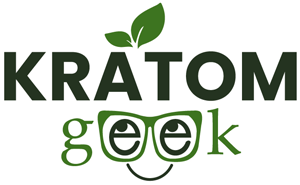This past decade, abrupt changes and upheavals in the botanical market brought a lot of unwanted federal attention to the industry. The Drug Enforcement Agency (DEA) tried to flex its muscles back in 2016, announcing it was going to perform an emergency ban on kratom products. The Food and Drug Administration (FDA) started an all-out assault on the plant the same year. That federal agency still has not let up on the misinformation tactics. And the FDA went simultaneously after the kava industry during that period, shutting down quite a few venues that the agency determined had not met the requirements set in place for the Current Good Manufacturing Practices (cGMP). Then in 2018, Congress created a bill to legalize industrial hemp on the federal level. And that introduced a new product to the market. Within a short time, cannabidiol (CBD) oil was the talk of the town.
CBD companies sprung up everywhere, wanting to grab a piece of the market. And a billion-dollar industry materialized overnight. Marketing companies began finding loopholes to advertise those products. Social media platforms started looking the other way when it happened. Within a year, CBD and kratom products had paid ads across the online spectrum. The FDA has so much on its hands at the moment that it can barely tread water. The coronavirus pandemic played a part, too. Now, cannabis looks to be the new player on the bench. And the past few years have shown additional states jumping on the weed legalization bandwagon, too.
More States in the US Have Legalized Weed
In the United States, the marijuana legalization efforts are the result of individual states asserting their rights to legislate over the laws within their borders, despite the federal government refusing to get with the program. And 2020 saw an increase in the number of states to create marijuana legalization laws for its citizens. Four additional states made cannabis legal for anyone above the age of 21.
Arizona, Montana, New Jersey, and South Dakota are the four newest states to pass legalization of recreational cannabis, giving adults the option to purchase and consume it like they would an alcoholic beverage from the store. Three of them already had previously legalized medical marijuana. However, South Dakota had medicinal and recreational on the 2020 ballot together. That way, if the recreational aspect of the industry failed, then those that need it for medical purposes would not get left behind. And the state surprised everyone by jumping the gun of medicinal usage and legalizing both at the same time. Now, there are a total of 15 states (and the nation’s capital) where adults have the freedom to purchase legalized weed without having to worry about criminal charges should they get caught participating in an activity that the government has no right to intervene.
Along with the four new states that gave Americans their freedom back to make personal decisions on their own, Mississippi gave its citizens the right to use medical marijuana for their ailments for the first time.
The UN Commission Reclassifies Cannabis
Back in January 2019, the World Health Organization (WHO) submitted to the United Nations Commission on Narcotic Drugs (UNCND) several recommendations on cannabis and its derivatives. And one piece of advice given was to remove cannabis and its resin from the Schedule IV list of drugs under the Single Convention on Narcotic Drugs (CND) of 1961. On that treaty, the Schedule IV drugs are also classified as Schedule I narcotics, which considers the illicit material as addictive and dangerous. However, when a substance additionally gets placed under the fourth schedule, it classifies that there are no known medical benefits of the drug that offsets other worrisome properties. Then the WHO gave a few recommendations about other molecular compounds within the cannabis plant.
On December 2nd, 2020, the 53 Member States of the UNCND voted to remove cannabis from its place on Schedule IV. The vote was a close call. A total of 27 nations pledged their favor in support of the plant’s removal, and 25 nations voted against it. Only a single country abstained from voting on the issue.
Surprisingly, the United States was one of the countries that voted to remove cannabis from a Schedule IV substance. The nation said its vote provided “the potential to stimulate global research into the therapeutic potential and public health effects of cannabis… to attract additional investigators to the field, including those… deterred by the Schedule IV status of cannabis.” The action appears ironic when our federal government vilifies cannabis at home.
US House Votes to Removed Cannabis From Schedule
On the federal level in the United States, legislators list cannabis under Schedule I of the Controlled Substances Act. That means the government believes these illegal drugs have no accepted medical use and a great potential for abuse. Some of the other drugs that are on the list besides marijuana are heroin, LSD, MDMA, peyote, etc. And the funny thing about those items that are listed is they all have scientific research that proves medicinal usage exists. Right now, marijuana even has a total of 35 states out of 50 that created legislation to legalize medical marijuana because of the input from the scientific and medical community. And besides heroin, none of those substances are highly addictive. So you can see how the federal government doesn’t schedule drugs in a fair or organized manner.
Still, a few members of Congress have pushed for marijuana reform at the federal level. Senator Kamala Harris, who looks set to become our next Vice President, introduced a version of the Marijuana Opportunity Reinvestment and Expungement (MORE) Act in 2019. But it stalled in the Senate. However, the House recently voted and passed its version of a MORE Act on December 4th, 2020. It passed primarily along party lines, indicating that the issue might become part of the Democratic platform in the coming years. Now, the Senate has two versions of the bill to consider. But don’t hold your breath for either bill to pass. A Republican-held Senate has the votes gridlocked.
The Internet Age Works to Bridge Support
The herbal industry and the federal government rarely see eye to eye. US agencies continue to apply pressure to the industry and its advocates at every turn. But from the looks of it, the botanical movement has steamrolled the government opposition for the most part. Long gone are the days when our government worked in the shadows, forcing the populace to learn about it after the fact. With the advent of social media and technological applications, Americans are more connected to their government than ever before. Most politicians have a social media presence. And some of them use it to bolster support. But that tactic works both ways.
Now, champions of political causes can reach a vast number of followers. Compatible movements can verge together to form larger audiences. And the formation of a non-profit organization is available to anyone. We witnessed it happen with the American Kratom Association (AKA). A grassroots movement spurred a political powerhouse. The advocacy group retained enough contributions from the consumers to fund lobbying efforts on Capitol Hill. The AKA continues to strive to get legislators to approve a federal Kratom Consumer Protection Act (KCPA) that protects customers. But it remains an uphill battle.
The AKA has had success on the state level. But a handful of states maintain a harmful stance on the issue, which hurts their citizens. Hopefully, in the future, the AKA can help the kratom community overturn the legislation passed by some states to criminalize kratom.






